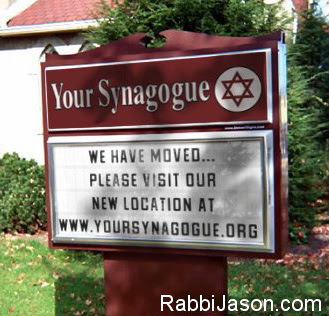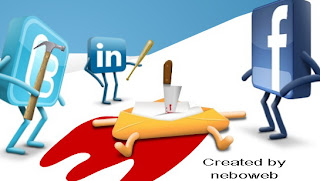Cross-posted to the Jewish Techs blog (The New York Jewish Week)
Quite often I get asked to consult synagogues on their Web presence. The first thing I do is take a look at their current Web site and try to determine in which year it was created. I can usually tell its production date within a few years based on several factors. I then explain what a Web site should do today. After I explain its function, I let them know that the look of the site matters less today than its functionality. Today’s Web site needs to be an extension of the community the synagogue is trying to create (or in some cases, has already created).
If someone’s trying to find your synagogue’s location, they can use Google Maps. But if they want to interact with the rabbi about last week’s sermon, or find out who else is attending a class, or make a contribution online, or update their membership record (see: Chaverweb), then they will need to access the synagogue Web site.
In a brilliant article, Beth Frank Backman explains the need for today’s Web sites to facilitate community building. It should be required reading for every synagogue and rabbi interested in making social media and the other technology of today work for them in their mission.
Here is her article and I can only hope it’s prescriptions are followed. All emphasis in boldface is mine.
Does Your Website Push Information or Facilitate Community Building?
By Beth Frank Backman
By Beth Frank Backman
Social media is much more than technology. It challenges us to rethink the nature and purpose of organizations and the reasons why we meet face to face. In doing so it will eventually force us to rethink the nature and role of the synagogue.
Will the synagogue of the future continue to be a coordination hub for Jewish education, bar and bat mitzvah preparation, Jewish identity activities, and prayer? Or will most of these functions move elsewhere, making the synagogue little more that a “meet-up” for ritually required prayer and life cycle events? Will it even be needed for those purposes?
In the future, even Hebrew school and bar/bat mitzvahs may no longer be a driving force in synagogue membership. Why cart kids half way across town to go to Hebrew school if the same learning can be had one-on-one via Skype? Imagine a world where bar and bat mitzvah tutors from Israel, Venezuela, San Diego and New York can be found in an on-line directory and are only a Skype call away. Imagine a world where one can find on the web free lance rabbis and cantors to lead private Shachrit and Mincha services in the Catskills, Rockies or Israel.
Imagine a world where kids form Jewish identity via summer camp and on-line networking with their camp friends throughout the year. Imagine a world where Jewish kids across the city keep in touch via Twitter and meet up at the movie theater or mall on Saturday night. What then happens to the traditional synagogue youth group? Why pay exorbitant synagogue dues just for Hebrew school training or the opportunity to participate in a youth group?
Much depends on how quickly synagogues see the opportunities of social media and incorporate them into their mission. Social media is allowing the traditional functions of the synagogue to be deconstructed and moved out of the synagogue. Many of these “imagined” services are already here and are beginning to generate loyalty.
This presents severe challenges for synagogues. The upcoming generation of 20 somethings sees on-line and off-line relationships as complements of each other.They expect communities where on and off line life create synergy with one another. Technology is fundamentally social and creates the infrastructure needed to maintain social relationships.
The current membership of many synagogues grew up in a world where real community is face to face. Technology is little more than a tool for delivering information. As a result of these differences, it sometimes hard for current membership to understand the need for a new type of on-line presence. When budgets are short there is little incentive to create a website for the Jewish community who has not yet shown up in the synagogue door. But if nothing is done, it is quite possible that the 20-something crowd may never show up.
Despite the challenges, at first glance it looks like synagogues are beginning to bite into social media. According to a study released by Jvillage Network, 66% of synagogues responding had a Facebook page. But a closer look at the data paints a very different picture.
Social media is much more than Facebook and Twitter. Even these classic social media tools can be used in ways that essentially ignore social media. Rather social media is an approach to technology that sees technology primarily as a way to create rich personalized two-way and multi-way connections criss-crossing a group of people.
To really grasp how a synagogue understands and uses social media we need to dig deeper and look at how and what kind of information is being shared on a website, Facebook page or twitter account. How does it build relationships? Is the information being pushed outward at people or are there genuine and personalized exchanges that create strong social bonds between members? When we look at how these tools are used, it is clear that synagogues have barely caught onto the idea of social media:
- It appears that none of the synagogues surveyed had primarily community generated content and only 21% have blogs where community members can comment. In general, website updates are centralized in the hands of staff people or a dedicated volunteer. Content is being pushed from the synagogue to the members and occasionally from member to synagogue, but almost never from member to member.
- Furthermore content pushed from the synagogue to members tends to be impersonal. While 49% of congregations updated their website with Jewish themed content and most had synagogue calendars, only 7% let members view their membership balances on line and only 4% use their website to help parents monitor their child’s progress in Hebrew school.
- Personalized information moving from member to congregation tends to be limited to administrative matters: membership application, Hebrew school registration, RSVPs and payment for synagogue events. Even then less than 30% of congregations had one or more of those services. Only 14% had volunteer sign-up tools and only 2% could make changes to their membership accounts.
- The impersonal nature of the websites is further underscored by the limited opportunities that members have to personalize their interaction with the website. Only 3% provide members a customized home page. Only 14% let users download the synagogue calendar into their personal calendars. 40% lack search functions making it impossible for users to go directly to the content most important to them.
- Even support of off-line community building is weak. Only 15% provided their membership directory on line. Only 3% stream religious services for house-bound community members.
- On the other hand, 40% accept on line donations. One has to wonder what message is being sent to members when donation features are more prevalent than features that support personalized member to synagogue communication.
- The sense that websites are being primarily used to push information to members rather than to facilitate community building is also reinforced by an apparent lack of interest in even passive sources of community feedback such as website analytics. 66% of synagogues either are not or do not know how to use analytic tools to monitor website usage.
(c) Rabbi Jason Miller | http://blog.rabbijason.com | Twitter: @RabbiJason | facebook.com/rabbijasonmiller

